Calculations on the
![]() system: another
system: another ![]() dopant smaller than
dopant smaller than
![]() (
(
![]() ,
after Shannon (1976)) for which we have potential parameters
(from Lewis and Catlow (1985)) consistent with all other ones.
,
after Shannon (1976)) for which we have potential parameters
(from Lewis and Catlow (1985)) consistent with all other ones.
The
![]() reduction energy was evaluated according to
the procedure outlined in section 2000-08-10. Notation is the same.
reduction energy was evaluated according to
the procedure outlined in section 2000-08-10. Notation is the same.
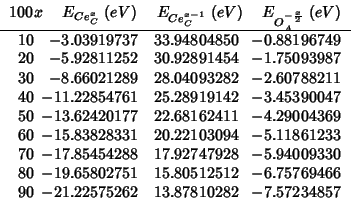
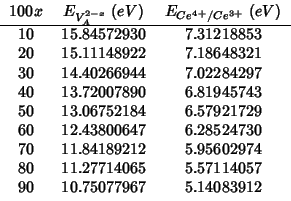
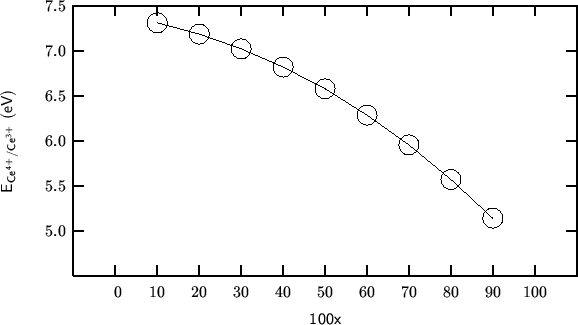
In the following figure we compare the
![]() reduction
energy as a function of the fraction of oxygen vacancies in the
structure (and NOT as a function of dopant composition) for the
different dopants. Subscripts are the effective ionic radii of the
dopants for 8-coordination, according to Shannon (1976):
reduction
energy as a function of the fraction of oxygen vacancies in the
structure (and NOT as a function of dopant composition) for the
different dopants. Subscripts are the effective ionic radii of the
dopants for 8-coordination, according to Shannon (1976):
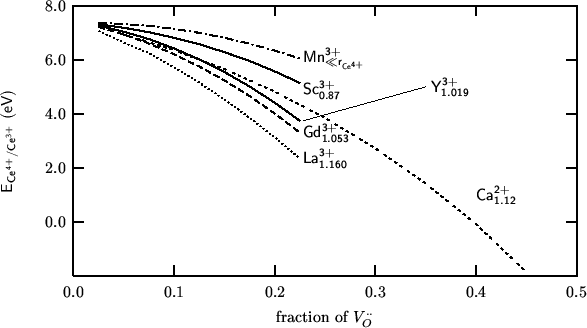
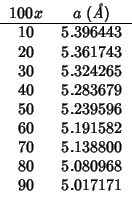
No comparison with Kim's empirical equation (Kim, 1989), as we have already seen that the accord does not seem to be very good in the other cases.
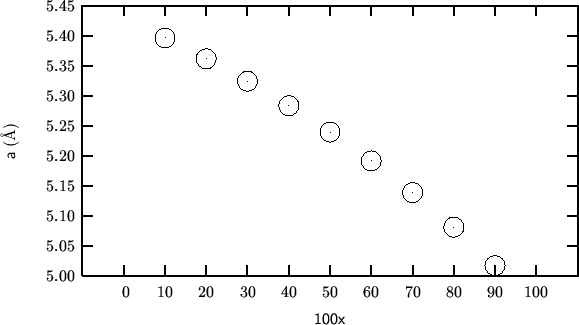
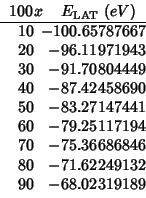
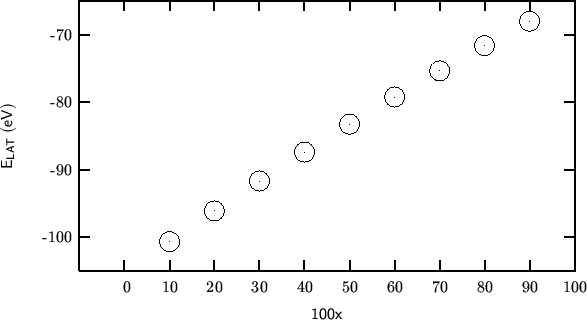
opti conp defect
maxcyc opt 200
maxcyc fit 200
dump every 1 ce3-50.dump
title
Ce3+ impurity
end
cell
5.329267 5.329267 5.329267 90.000000 90.000000 90.000000
fractional 5
Ce4 core 0.0000 0.0000 0.0000 -3.7000 0.5000 0.0000
Sc core 0.0000 0.0000 0.0000 3.0000 0.5000 0.0000
O core 0.2500 0.2500 0.2500 0.0770 0.8750 0.0000
Ce4 shel 0.0000 0.0000 0.0000 7.7000 0.5000 0.0000
O shel 0.2500 0.2500 0.2500 -2.0770 0.8750 0.0000
space
225
size 10.00000000 21.00000000
centre 0.00 0.00 0.00
impurity Ce3 0.00 0.00 0.00
species 2
Ce3 core -4.700000
Ce3 shel 7.700000
buck
Ce4 shel O shel 1986.8300 0.351070 20.400 0.000 15.000
Sc core O shel 1299.4 0.33120 0.000 0.0 15.0
Ce3 shel O shel 1731.6181 0.363720 14.433 0.000 15.000
O shel O shel 22764.300 0.149000 27.890 0.000 15.000
spring
Ce4 291.75000
Ce3 291.75000
O 27.290000